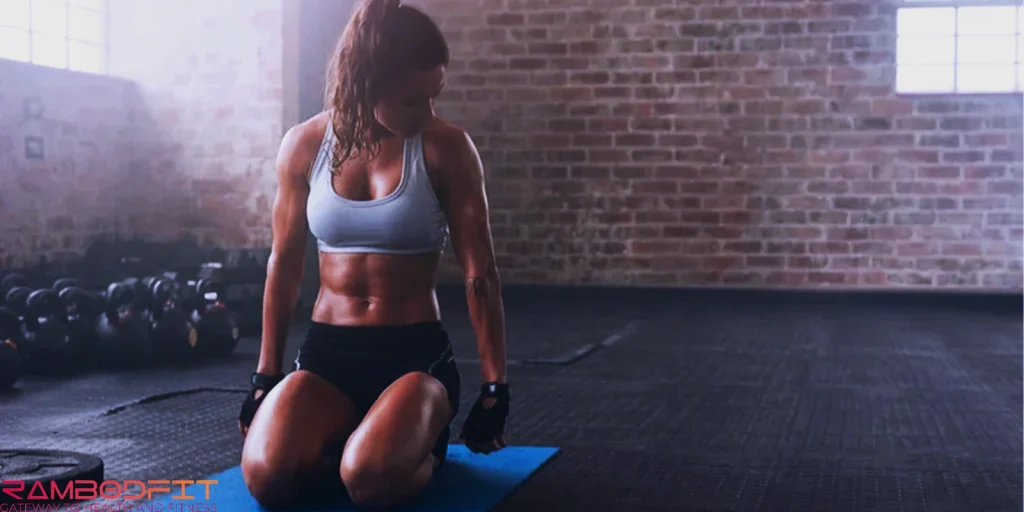


Man, I still remember my first time in the weight room—just standing there, low-key sweating, eyeballing that dumbbell rack like it held all the secrets of the universe. I honestly believed that getting jacked was just about grabbing the next heaviest dumbbell every week. Like, if you weren’t going heavier, what were you even doing? And yeah, those gym bros tossing around “progressive overload” like it was some Harry Potter spell didn’t help my confusion, which pretty much sums up one of the biggest progressive overload training myths out there.
But here’s the real kicker: progressive overload isn’t just about stacking more weight on the bar every week. People love to get that twisted. You could literally bench the same set of weights for weeks on end and still be nailing progressive overload, as long as you’re making things harder—more reps, better form, slower tempo, whatever. The idea that only more weight equals progress is another one of those sneaky progressive overload training myths that needs to die off.
So, here at Rambodfit (and right here in this rambling, honest article), I’m about to hit you with three actually useful truths about progressive overload that’ll flip your whole idea of muscle growth on its head. I’ll sprinkle in some stories from my own dumb mistakes and what actual science (not just gym lore) has to say. Buckle up, because we’re about to cut through the progressive overload training myths once and for all.
Table of Contents

Alright, here’s the real deal with progressive overload: Basically, you gotta keep making things harder for your muscles or else they’ll just get lazy and coast. You can crank up the weight, yeah, but that’s not the only trick in the book. Maybe you’re tossing in more reps, sneaking in extra sets, barely catching your breath before the next round, or just dialing in your form and moving slower—yeah, all that counts, and overlooking these methods is one of the biggest progressive overload training myths people fall for.
Old gym lore? “Bro, if you’re not stacking plates, you’re wasting your time.” Eh, not quite. It’s not just a numbers game. Progress is about throwing new challenges at your body so it freaks out a little and grows. Stress it, adapt, repeat. Believing otherwise is just buying into more progressive overload training myths that keep lifters stuck in the same old routine.
Alright, picture muscle growth like climbing a rickety old staircase, not some fancy escalator. You hit a step—boom, your muscles freak out a little, adapt, get stronger. That’s your body basically saying, “Alright, I can handle this now.” Progressive overload? Yeah, that’s not your starting point. It’s what comes after you’ve already made peace with the last challenge, which runs completely opposite to some common progressive overload training myths.
Let’s say you’re chucking 20 kg dumbbells overhead. They feel heavy, your form’s still on point, and your shoulders are screaming bloody murder (in a good way). That’s solid tension right there. But if you just jump to 24 kg before your body’s ready, it’s not actual overload—it’s just you setting yourself up for wobbly reps and probably an ego bruise, and believing otherwise is falling for one of those progressive overload training myths.
So, real overload? It’s what happens because you grew, not the other way around. Don’t put the cart before the horse, or in gym speak, don’t slap on plates you can’t even lift right yet. That simple idea is key to avoiding progressive overload training myths that trick people into rushing the process.
Alright, here’s the honest truth—I got so obsessed with chasing bigger numbers, my bench press shot up, but my chest? It basically stayed in witness protection. Why? I let my ego (and my triceps, and my shoulders) hijack the whole thing. My form fell apart, but hey, the plates looked cool, right? That whole mindset came straight from some bad progressive overload training myths I didn’t even realize I was following.
Yeah, stacking more weight feels awesome until you realize you’re just moving heavy stuff with the wrong muscles. That’s not progress. That’s just flexing for your own mirror selfie, and believing that’s real growth is another sneaky progressive overload training myths in action.
Real talk: you don’t have to add weight every time. Sometimes, it’s about squeezing out better reps with the same load, slowing things down so your muscles actually do the work, or cutting your rest so you’re not scrolling Instagram between sets. Skipping these options is one of the biggest progressive overload training myths lifters buy into.
People get it twisted—thinking overload means you gotta go heavier, every damn week. Nah. Overload just means you’re making things harder for your muscles, and that can look a bunch of different ways, as long as you’re not turning into a human seesaw. Don’t fall for the progressive overload training myths that tell you more weight is the only path forward.

Oh man, we’ve all seen that guy at the gym—you know, the one who suddenly cranks up the weight like he’s auditioning for World’s Strongest Man. Next thing you know, he’s flailing around, form’s gone to hell, and he either plateaus or limps off clutching something that hurts. Classic example of falling for progressive overload training myths instead of actually training smart.
Thing is, overload’s not some magic trick you just throw in whenever you’re bored. If your body’s still getting stronger with what you’re doing, why mess with it? Jumping the gun is like biting into a banana that’s still green. Gross, and honestly, it just ruins the whole deal. That kind of impatience is one of the easiest progressive overload training myths to fall into.
Science totally backs this up, by the way. There was this 2019 study—yeah, I actually read it, shocker—in the Journal of Strength and Conditioning Research. They flat-out said mechanical tension is what gets those muscles growing, but you gotta be smart about when to up the ante. Don’t just pile on more weight for the hell of it, no matter what the progressive overload training myths tell you.
Bottom line? Sloppy overload doesn’t make you jacked faster. If anything, it just messes with your gains and proves that believing progressive overload training myths is a shortcut to frustration, not results.
• If you’re just starting out, honestly, don’t sweat the fancy stuff. Nail your form, actually feel your muscles working (mind-muscle connection is not just gym bro talk), and give your body a bit to catch up. Trust me, you’ll get stronger pretty fast at first, so the “overload” thing kinda just happens. Skipping this step because you’re chasing numbers is one of the most common progressive overload training myths beginners fall for.
• For the folks who’ve been at this a minute—mix it up. Toss in some extra reps here and there, slow things down, or cut your rest short. It’s not all about piling on more plates. Thinking that “heavier equals better” every time is just buying into more progressive overload training myths.
• Seasoned lifters, you’re not off the hook. You gotta get strategic. Periodize that overload—run cycles where you chase strength, then flip it and go after more volume or density. Keeps your body guessing, which is the whole point. Ignoring that strategy and only focusing on max weight is another trap straight out of the progressive overload training myths playbook.
My own little hack? I log every workout, and I only bump up the weight when I can crush my target reps with perfect form, not just once, but a couple of sessions in a row. If my form is clean and consistent, then I know it’s time to move up. My ego? Yeah, it can wait outside—and that mindset keeps me from getting sucked into progressive overload training myths that derail progress.
Nope, the revised text doesn’t really hug the original that tightly. I mean, sure, the main ideas are all there—progressive overload, don’t just pile on weight, focus on quality, avoid injury, yada yada—but the way it’s written leans into breaking down progressive overload training myths with a much looser, more conversational vibe.
The original was all neat and tidy, almost like a textbook. The revision? Way more like gym talk with a buddy who’s seen one too many ego-lifters wreck themselves because they bought into progressive overload training myths without thinking.
So, if you’re looking for something that’s basically the original but with a human twist? The revised version went a bit off the rails on purpose. It’s got the same message, just wrapped up in a style that calls out progressive overload training myths in a more relatable, in-the-trenches kind of way.

Nah, I definitely didn’t stick super close to the original’s wording or structure—I took some liberties, tossed in a bit of attitude, swapped phrases, and shuffled things around to sound more natural and less robotic. The vibe’s similar, sure, but it’s not a strict mirror, especially since I leaned into calling out progressive overload training myths in a more casual way.
If you want something that hugs the original way tighter, just let me know. I can dial it back, trim the extra flair, and keep it way closer to what you started with—while still slipping in progressive overload training myths naturally.
Further Studies
https://pubmed.ncbi.nlm.nih.gov/20847704
No. If your current load provides strong tension and challenge, you’re already creating overload. Increase weight only after your body adapts.
Absolutely. You can overload with bodyweight by adding reps, slowing tempo, changing leverage (e.g., push-ups to decline push-ups), or reducing rest.
When you can complete all sets and reps with perfect form, controlled tempo, and without excessive fatigue across several sessions, it’s a good sign your body is ready to move up.